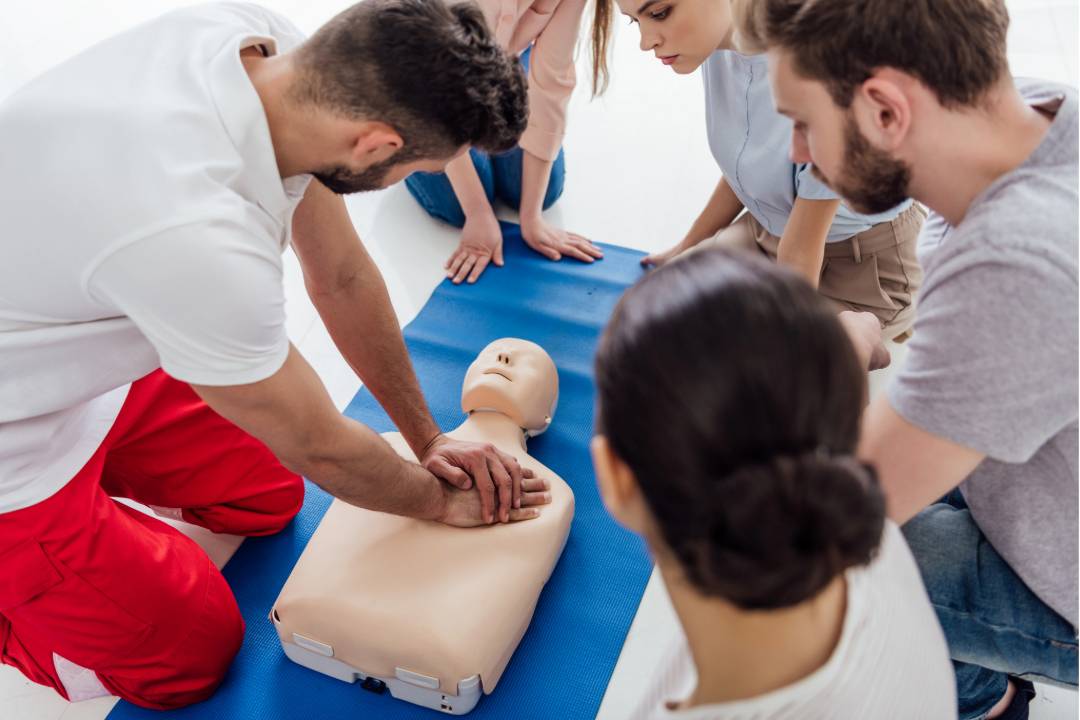
Where To Find Free Printable CPR Cards?
Table of Content
| Where to find free printable CPR cards |
|
Cardiopulmonary resuscitation (CPR) is a valuable skill that can save lives during emergencies. Learning CPR ensures you are ready to respond during cardiac or respiratory emergencies. CPR cards are handy tools that either serve as proof of your training or provide a quick reference to the steps involved. While official certification usually requires payment, free printable CPR cards are available online and can be highly useful. In this article, you will learn where to find free printable CPR cards, their benefits, and how to use them effectively.
Why is a CPR card important?
A CPR card is valuable proof of your knowledge and skills to respond in an emergency. The significance of the CPR card can be understood with the help of the following reasons:
1. Proof of CPR knowledge:
A CPR card is proof of successful completion of CPR training. Professions like childcare providers, teachers, and healthcare workers require this proof as part of their job requirements.
2. Quick reference during emergencies:
It is easy to forget critical steps while responding to a medical emergency. A CPR card provides a quick and concise guide, ensuring you perform each step correctly.
3. Encouragement for learning:
A printable CPR card with detailed instructions can encourage you to practice or seek further training. Thus, CPR certification can be a valuable addition to your skill set.
Places to find free printable CPR cards
Finding printable CPR cards is easy if you know where to look. Here are some reliable sources and methods to explore:
1. CPR training resources:
Many websites that offer CPR training also provide free downloadable cards. These cards often summarize the critical steps for performing CPR on adults, children, and infants. Some include diagrams or infographics, which make it easier to understand the CPR process.
When using these resources, check that the information follows the latest guidelines from trusted medical authorities. Look for cards that provide clear and updated steps for chest compressions and rescue breaths. They must also include emergency contact numbers.
2. Public health resources:
Health organizations often create materials to educate the public on lifesaving techniques. They offer free printable CPR guides in the form of a printable card. They are aimed to promote CPR knowledge, so they are easy to access and print.
These cards may also include additional tips, such as when to call for emergency services or the usage of an automated external defibrillator if one is available.
-
Community events and workshops:
Local community centers, schools, or public events sometimes organize free CPR workshops. These events often provide educational handouts, including CPR cards, as part of their programs. While these workshops may not offer formal certification, they can still provide valuable learning materials. Ask your local library, school, or community group about upcoming events focused on CPR training.
3. General health websites:
Some health informational websites offer downloadable first aid and CPR materials. These sites provide simple, easy-to-understand guides that you can print and keep for reference during emergencies. These guides are often created for public awareness and do not require signing up or paying for access.
Features to look for in a CPR card
Free printable CPR cards are easy to access, and they provide ample instructions on performing this lifesaving technique. Here are some features you must consider while finding a printable CPR card:
1. Clear instructions:
The CPR card should clearly explain all the steps you need to follow during an emergency. It should use simple words and include infographics so that anyone can understand and apply the information.
2. Guidelines for different age groups:
CPR steps are different for adults, children, and infants. A well-drafted CPR card should include clear instructions for each age group. This helps in knowing the correct techniques and can help during an emergency.
3. Compact and printable:
A CPR card should be small enough to fit in your wallet or pocket, making it easy to carry with you everywhere.
4. Emergency numbers:
The CPR card should include emergency phone numbers of medical services or local authorities. It may also provide tips on when to call for professional help, which is very useful during stressful situations.
Conclusion
Carrying a printable CPR card is the most straightforward way to prepare for emergencies. These cards can be used as a reminder of your training and offer easy access to lifesaving information. You can find free CPR certificates by looking through a variety of internet or local resources. You should choose a card with clear, updated instructions and keep it in a place where you can easily access it. Regardless of your level of training, a CPR card is a helpful tool that can help you save lives in an emergency.

Comments (0)